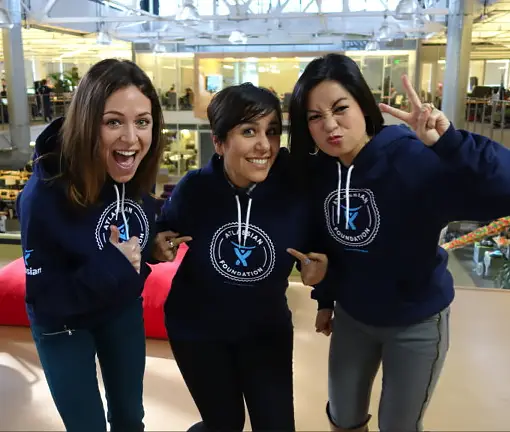Empowering Change: The Impact of Workplace (Employee) Giving Programs

In an era where corporate social responsibility (CSR) is increasingly valued, workplace giving programs, more commonly called payroll giving or employee giving in the United States and Canada, have emerged as powerful tools for driving positive social change. These programs enable employees to contribute to charitable causes conveniently, often through payroll deductions or employer matching schemes. Beyond philanthropy, workplace giving fosters a culture of generosity, employee engagement, and collective impact. This short article delves into the significance of workplace giving programs, their benefits for employees and communities, and strategies for maximising their impact.
Quick link: If you’re considering establishing a workplace giving program at your company, Dana Asia can offer guidance on responsible giving, including selecting charities that ensure your donations make a meaningful, lasting impact.
How does workplace giving work?
In Australia, workplace giving operates as a voluntary program where employees can choose to donate a portion of their pre-tax salary to eligible charities or community organisations of their choice. Employers typically facilitate these contributions through payroll deductions, making it convenient and tax-effective for employees to support charitable causes. Many companies also offer matching gift programs, doubling employees’ donations to further amplify their impact.
The power of workplace giving
Workplace giving programs provide employees with opportunities to support causes they care about, whether it’s education, healthcare, environmental conservation, or humanitarian aid. Beyond the tangible benefits of workplace giving, such programs contribute to employee engagement and satisfaction. Research has shown that employees who participate in workplace giving programs report higher levels of job satisfaction and morale. Feeling proud of their employer’s commitment to social responsibility, employees are more likely to feel connected to their company’s mission and values, leading to increased loyalty and retention.
Workplace giving programs play a pivotal role in fostering a culture of giving within organisations. By promoting volunteerism, fundraising events, and awareness campaigns, employers create opportunities for employees to get involved in meaningful causes collectively. This sense of shared purpose strengthens team dynamics, builds camaraderie, and cultivates a positive work environment centred around empathy and compassion.
The impact of workplace giving extends far beyond the office walls, benefiting communities and society at large. Through their collective contributions, employees make a meaningful difference in addressing pressing social and environmental challenges. Whether it’s supporting local charities, funding disaster relief efforts, or investing in sustainable development projects, workplace giving programs empower employees to be agents of change in their communities.

Workplace giving in Australia
Workplace giving is increasingly popular in Australia, with a growing number of companies implementing such programs. According to research conducted by the Australian Charities Fund, around 4% of Australian employees participate in workplace giving programs with an average annual donation per employee of between AU$250 and AU$500. However, this amount can vary widely depending on factors such as the size of the company and the generosity of employees. In addition to employee giving, many companies in Australia offer matching gift programs where they match their employees’ donations to eligible charities with matching ratios typically ranging from 1:1 to 2:1. Workplace giving donations contribute millions of dollars annually to a wide range of causes, including health, education, social services, environmental conservation, and disaster relief. Notably, workplace giving donations in Australia are tax-deductible, providing an additional incentive for employees to participate in such programs. This tax benefit allows employees to reduce their taxable income, resulting in potential savings on their annual tax bill.
Is there an equivalent of workplace giving in the US?
Yes, workplace giving very much exists in the US though may be more commonly referred to in the US as “employee giving programs” or “workplace giving campaigns.” These programs share many similarities to workplace giving in Australia but with a few differences. Whereas in Australia donations made through workplace giving programs are tax-deductible for employees, in the US the specifics of tax-deductibility may vary based on individual tax circumstances. Australia has government-endorsed workplace giving programs like the Workplace Giving Australia initiative, which encourages businesses to set up workplace giving schemes. While the US government does provide tax incentives for charitable donations, there isn’t a centralised government-supported program specifically focused on workplace giving. Research suggests employer matching of workplace giving donations may be higher in the US, with the average employee participation in employer-matching gift programs is 10% in the USA compared to 4.7 % in Australia.
What about payroll giving in the UK?
In the UK, the term “payroll giving” is more commonly used for workplace giving. The UK is much more similar to Australia, with donations made through workplace giving programs being tax-deductible for employees, providing an incentive for participation. Both Australia and the UK have government-endorsed initiatives to promote workplace giving. In Australia, there is Workplace Giving Australia, while in the UK, there is the Payroll Giving scheme, which is supported by HM Revenue & Customs (HMRC). Workplace giving programs in both countries may be facilitated through payroll deductions, employer matching, and volunteer opportunities. However, the specific mechanisms and organisational structures can differ based on local regulations and corporate practices. Engagement with charities through workplace giving is In both countries, with the CAF World Giving Index for 2022 estimating 64% of individuals in Australia and 65% in the United Kingdom participate each year.
Strategies for success
To maximise the impact of workplace giving programs, employers can implement several strategies:
- Promote awareness: Communicate the benefits of workplace giving programs and the impact of employee contributions through various channels, including email newsletters, intranet portals, and employee meetings.
- Offer matching gifts: Encourage employee participation by offering matching gift programs, where the company matches a portion or all of employees’ donations to eligible charities.
- Encourage volunteerism: Organise volunteer opportunities and community service projects to complement workplace giving efforts, allowing employees to engage directly with causes they support.
- Celebrate achievements: Recognise and celebrate milestones and achievements in workplace giving, whether it’s reaching fundraising targets, volunteering hours, or making a significant impact on a particular cause.
- Evaluate impact: Regularly assess the effectiveness and impact of workplace giving programs, soliciting feedback from employees and partner organisations to identify areas for improvement and innovation.
A story in workplace giving success: Atlassian
One notable example of a successful workplace giving program is the initiative implemented by Atlassian, a leading Australian software company with a global presence. Atlassian’s workplace giving program, called the Atlassian Foundation, is built on the principle of “Pledge 1%,” whereby the company commits 1% of its equity, 1% of its employees’ time, and 1% of its product to charitable causes.
Atlassian’s workplace giving program operates through a combination of employee donations, company matching, and volunteer opportunities. Employees have the option to contribute a portion of their salary to the Atlassian Foundation, with the company matching their donations dollar-for-dollar. This matching gift program effectively doubles the impact of employees’ contributions, incentivising greater participation. Moreover, Atlassian encourages employee involvement in volunteering and community service initiatives through its “Foundation Time Off” policy. Employees are granted paid time off to volunteer for charitable organisations and participate in community projects, further supporting the company’s commitment to social responsibility.

The Atlassian Foundation directs its funding towards a range of charitable causes, including education, environmental conservation, disaster relief, and social justice. Through partnerships with non-profit organisations and grassroots initiatives, the foundation channels resources to projects that create meaningful and sustainable impact in communities worldwide. Atlassian’s workplace giving program has been widely praised for its effectiveness in promoting employee engagement, fostering a culture of giving, and making a tangible difference in the lives of people in need. By integrating philanthropy into its corporate culture and empowering employees to contribute to causes they are passionate about, Atlassian sets a compelling example of how workplace giving can drive positive change and create a more socially responsible business environment.
Let Dana Asia guide you through the process
Workplace giving programs represent a powerful convergence of corporate philanthropy, employee engagement, and community impact. By harnessing the collective generosity of employees, companies can drive positive change, strengthen organisational culture, and contribute to the well-being of society. If you are interested in setting up a workplace giving program within your company, Dana Asia can provide advice on how to give responsibly, including how to choose charities that will use your donations for real, long-term impact.
Related reading: Responsible & Sustainable Giving: Making Ethical and Effective Donations






